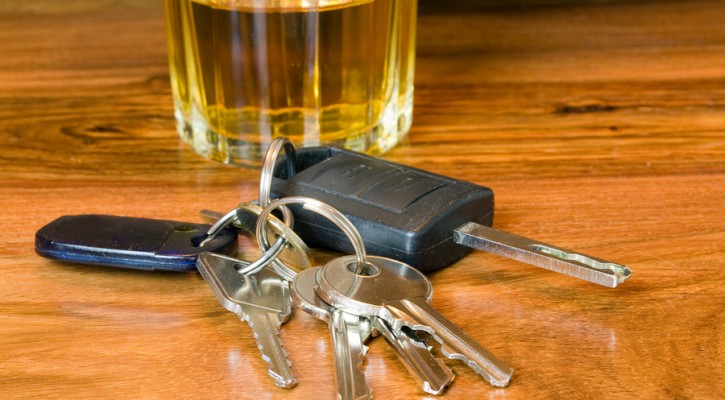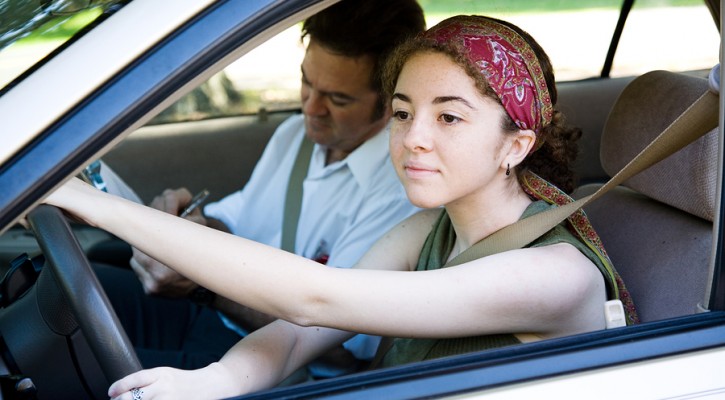Monthly Archives: December 2008

Five Worst Teen Driving Mistakes: Part Two
December 19, 2008
Most parents live in dread of the day their teens get driver’s licenses and get behind the wheel on their own. Their concerns are well-founded, since teen drivers have the highest death rates in car crashes of any age group. Motor vehicle crashes are the number one cause of death among Americans aged 15-20. But parents can help their teens be a safer driver even after they are licensed, particularly by paying attention to common risk factors. In this five-part series, we’ll discuss the five worst teen driving mistakes:
- They don’t wear safety belts.
- They drink and drive.
- They panic/overcorrect in emergency situations.
- They drive too fast for conditions.
- They ride with other teens.
In this, part two of the series, we’ll discuss the risk teens take by driving after drinking alcohol. Teens are at far greater risk of death in an alcohol-related crash than the overall population, despite the fact they cannot legally purchase or publicly possess alcohol in any state. (National Highway Traffic Safety Administration)
Did you know?
- During 2006, 7,643 15- to 20-year-old drivers and motorcycle operators were involved in fatal traffic crashes across the nation, 1,377 (18 percent) of whom had a blood alcohol concentration (BAC) of .08 or higher.
- Nationally, 64 percent of all drivers or motorcycle operators ages 15 to 20 who were involved in fatal traffic crashes and had a BAC of .08 or higher died as a result of the crash.
- Violators of underage drinking laws often face a trip to jail, the loss of their driver’s license, and dozens of other unanticipated expenses including attorney fees, court costs, and other fines. Plus, there is the added embarrassment, humiliation, and potential loss and consequence related to academic eligibility, college acceptance, scholarship awards, and more.
- Most of those killed in alcohol-related crashes involving teen drivers are the young drivers themselves and their passengers.
All states now enforce a minimum drinking age of 21. Nevertheless, alcohol related crashes are still a top safety problem. Make sure your teen understands:
- Alcohol is not actually digested; it’s processed. It’s absorbed directly through the lining of the stomach into the bloodstream. This is why the body feels the effect so quickly.
- Alcohol has its first and greatest effect on the parts of the brain that control judgment and reasoning, the most critical skills needed by drivers. Physical abilities become impaired soon after.
- As more alcohol enters the bloodstream, the area of the brain that controls muscular movements and body control begins to slow down. Even after the driver recognizes danger, the brain takes longer than normal to process the information and react to the danger. Messages the brain sends to different parts of the body might become confused.
- A driver affected by alcohol has a decreased ability to reason clearly and to make sound judgments. However, the driver may feel as though thinking and judging abilities are sharper and quicker than usual.
- Alcohol quickly diminishes the ability to concentrate. A decrease in the ability to concentrate greatly increases a driver’s level of risk. A person’s driving ability can be reduced after only one drink.
- The muscular reactions of a driver who has been drinking can become slow and clumsy. Steering and braking movements can become uncoordinated. The driver might over-steer, brake late or not brake at all. The driver might not be able to negotiate turns properly and safely. Such actions cause drinking drivers to be involved in serious crashes.
Make sure your teen knows that she or he can always call you for a ride, whether the teen is intoxicated or is faced with the prospect of riding with a driver who has been drinking. Make a pact in which you promise to pick up your teen without questions or lectures. You can have a discussion about the issue the following day, when you are calmer and your teen is safe at home.
Teen Drivers and Prescription Drugs
December 17, 2008
Usually, when people think about getting arrested for Driving Under the Influence (DUI), they think of alcohol. But in Florida, you can be arrested for driving under the influence of any substance that affects your driving. And it’s not too difficult to find substances that do – even legal ones.
Did you know?
- Taking sedating antidepressants even 10 hours before driving is equal to driving impaired.
- Ten mg of Valium can cause greater driving impairment than an alcohol concentration of 0.10.
- Even in the prescribed dose, the side effects of a prescription drug are beyond your control.
- More than 150 medications interact harmfully with alcohol.
- Overdosing on a narcotic could cause a person’s breathing to slow down or stop and could cause death.
Narcotics are the most widely used prescription pain relievers. Narcotics are drugs that relieve pain and cause drowsiness or sleep. Side effects of narcotics include:
- drowsiness
- dizziness
- nausea and vomiting
- confusion
- decrease in rate and depth of breathing
Some drugs, such as the stimulants used to treat ADHD, may make you feel alert and confident when you’re driving. In reality, the situation may be quite different. Drugs can fool you into believing you’re in control of your driving when you are, in fact, impaired.
Some antihistamines (used to treat allergies) are available over-the-counter, but others are only available with a doctor’s prescription. The effects of antihistamines include:
- drowsiness – the most common side effect
- dizziness
- poor coordination
- restlessness
- nervousness
- confusion
- blurred vision
- slowed respiration
Tranquilizers are prescription drugs that are used to treat medical conditions such as severe anxiety, stress disorders and muscle tension. Tranquilizers are depressants. This means they reduce the amount of activity in the brain and central nervous system. Tranquilizers can relax people to the point where they get clumsy and have trouble thinking straight. Exceeding the prescribed dose of tranquilizers can cause problems with thinking, memory and judgment.
Driving skills can also be impaired by other medications, such as codeine, which is found in prescription cough medication. When combined with alcohol, the adverse effects of these medications on driving skills get worse. The same is true of some antidepressants, most antihistamines, certain cardiovascular medications, narcotics, tranquilizers, and some anti-psychotic medications.
Never drink alcohol while you are taking other drugs. Mixing alcohol with certain medications can cause:
- nausea and vomiting
- headaches
- drowsiness
- fainting
- internal bleeding
- loss of coordination
- heart problems
- breathing difficulties
- death
Combining any two drugs, or a drug with alcohol, may result in the synergistic effect. This means that the combination of drugs produces effects that are greater than the sum of the effects of the two drugs. This is called an additive effect; instead of a 1 + 1 = 2 result, the synergistic effect may cause a 1 + 1 = 3 result. Even small doses might cause problems. These drug interactions may result in unconsciousness and death.
Always follow label instructions and the advice of your pharmacist or doctor. But err on the side of caution – if you don’t think the drug should affect your driving but you just don’t feel well, don’t drive.
Read more about how to avoid getting a DUI from over-the-counter or prescription drugs.

Five Worst Teen Driving Mistakes: Part One
December 11, 2008
Most parents live in dread of the day their teens get driver’s licenses and get behind the wheel on their own. Their concerns are well-founded, since teen drivers have the highest death rates in car crashes of any age group. Motor vehicle crashes are the number one cause of death among Americans aged 15-20. But parents can help their teens be a safer driver even after they are licensed, particularly by paying attention to common risk factors. In this five-part series, we’ll discuss the five worst teen driving mistakes:
- They don’t wear safety belts.
- They drink and drive.
- They panic/overcorrect in emergency situations.
- They drive too fast for conditions.
- They ride with other teens.
In this, part one of the series, we’ll emphasize the importance of wearing safety belts. First, you’ll need to set the right example for your children by wearing your safety belt. “Do as I stay, not as I do,” doesn’t work with teens, particularly when they’re out of your sight and you can’t personally enforce the rule.
Also, make sure you never pull out of your driveway or a parking space until everyone in the vehicle is wearing a seat belt. Many high school students fail to use their safety belts even when riding with adults who are buckled up. An observational survey conducted at 12 high schools found that 46 percent of high school students were not wearing their safety belts when riding with adult drivers. About half of the unbelted students were riding with adults who were belted. If your teens are used to wearing safety belts as passengers, they’ll be comfortable wearing them as drivers.
Next, educate your teen about the benefits of wearing safety belts. Here’s some supportive information:
- Research has found that lap/shoulder safety belts, when used, reduce the risk of fatal injury to front-seat passenger car occupants by 45 percent and the risk of moderate-to-critical injury by 50 percent. For light truck occupants, safety belts reduce the risk of fatal injury by 60 percent and moderate-to-critical injury by 65 percent.
- Ejection from the vehicle is one of the most injurious events that can happen to a person in a crash. In fatal crashes in 2005, 75% of passenger car occupants who were totally ejected from the vehicle were killed. Safety belts are effective in preventing total ejections. Only 1% of the occupants reported to have been using restraints were totally ejected, compared with 30% of the unrestrained occupants.
- Safety belts should always be worn, even when riding in vehicles equipped with air bags. Air bags are designed to work with safety belts, not alone. Air bags, when not used with safety belts, have a fatality-reducing effectiveness rate of only 12 percent.
Third, educate your teen about the safety belt laws in your state. Be sure to review the graduated licensing laws – safety belt enforcement may differ from that of fully licensed drivers.
Statistical source: National Highway Traffic Safety Administration
Can I Get a DUI from My Cough Medicine?
December 9, 2008
Many first-time drivers know that Driving Under the Influence (DUI) of alcohol is extremely dangerous. But they may not realize that the cold medicine they take could cause a level of impairment similar to that of drinking alcohol and in many states, could even result in arrest and conviction of DUI. Though over-the-counter drugs are legal, they are not always harmless.
Many teenagers will take over-the-counter drugs to stop a headache or relieve cold symptoms. Some take larger amounts of over-the-counter drugs to get high and feel good. Of course, this is particularly risky because taking any drug in large quantities results in a higher level of impairment, but it is important to know that even the recommended dosage of an over-the-counter drug can reduce your driving skills. Your coordination, decision-making, and reaction time can be affected.
Over-the-counter medications are required to have printed warnings about side effects, including driving risks. The bad news is, many people don’t read the warning or they don’t believe it is meant for them. If you don’t understand these warnings, ask a pharmacist for help. Remember that many over-the-counter drugs, such as those that provide multi-symptom cold relief, contain several types of drugs in one pill. Select a medication that treats only the symptoms from which you actually suffer.
Here is a partial list of legal, over-the-counter drugs that could impair your ability to drive.
- Allergy medicines/Antihistamines
- Decongestants
- Cough syrups
- Motion sickness medication
- Ulcer medication
- Alcohol-containing medicines
- Caffeine-containing medicines
For example, antihistamines slow down reaction time, impair coordination, and can make you extremely sleepy – so sleepy you can’t even hold your head up. Decongestants, which may be combined with antihistamines in multi-symptom cold medicines, can cause anxiety and dizziness. And though many people who take caffeine-containing medications do so to stay awake, the effects of these drugs don’t last long and can end abruptly, leaving you even more tired than before you took the drug. Caffeine is also found in many headache relievers – check the ingredients list of every medicine you take so you’ll be aware of what you’re taking and can consider the effects before you get behind the wheel.
Some over-the-counter drugs (such as cough medicine, which contains alcohol) may temporarily make you feel more alert and confident when you’re driving. This is because your judgment is impaired, not because you’re a better driver than you were before you took the drug. Drugs can fool you into believing you’re in control of your driving when you are, in fact, impaired. Remember, you are responsible for making sure that you are unimpaired by any substance when you drive.
The effects of some over-the-counter drugs may not be apparent until an hour or two after you take them; never put yourself in the position of getting out on the road only to realize you are impaired. And not everyone reacts the same way to the same drug every time, so you could suffer unexpected side effects even if you’ve taken that particular drug in the past with no problems. Plan ahead. Ask a parent or friend to drive you if you need to go somewhere. Realize that if you’re sick enough to need medication, the symptoms of your illness may cause enough impairment that you shouldn’t drive, even if the medication itself doesn’t cause problems.

How to Get a Florida Learner’s Permit
December 5, 2008
So, you’re fifteen years old and ready to get your Florida Learner’s Permit. Congratulations! You are about to take the first step towards increased freedom and independence – but along with that comes increased responsibility. You’ll need to follow certain steps to get your learner’s permit. Here’s how to make the process as smooth as possible.
First, try to plan ahead. Many new drivers want to get their regular driver’s licenses as soon as they turn 16, but you need to have held a learner’s license for at least one year without any traffic convictions before you apply for your operator’s license.
When you go to the DMV, you’ll need appropriate identification. You’ll also need a certificate of completion for the Traffic Law and Substance Abuse Education course. Your parent or legal guardian will need to sign a consent form. Then you’ll be ready to take the written test!
The written test consists of 20 questions about road rules and 20 questions about road signs. You must answer 15 out of 20 questions correctly to pass each test. Then you’ll take a vision test and a hearing test right there at the DMV.
Once you earn your learner’s permit, you must comply with certain restrictions to keep it. You can never drive alone with a learner’s permit, no matter how old you are. You may only drive during daylight hours during the first three months and until 10 p.m. thereafter, always with a licensed driver who is at least 21 years old and occupies the front passenger seat.
You’ll need to follow all traffic laws carefully, both to develop safe driving habits and to avoid further restrictions. If you receive a moving traffic conviction while you have a learner’s license, the one-year period you are required to hold your learner’s license will be extended for one year from the date of the conviction or until you are 18 years old, whichever happens first.
If you receive six points on your driving record within a 12-month period, your driving privileges are automatically restricted to business purposes only for 12 months or until you are 18, whichever happens first. If you receive additional points during this restricted period, the restriction is extended 90 days for each additional point.
In addition, drivers under the age of 21 with a blood alcohol level of .02% or more will have their license immediately suspended for six months. This administrative action is for a first offense; a second offense will result in a one-year suspension. Refusal to submit to testing results in a suspension of twelve months for a first offense and eighteen months for a second offense.
If you are truant in your school attendance, your driving privilege will be suspended until you provide proof you have attended school for 30 consecutive days.
As you can see, once you get your learner’s permit, you’ll need to drive very safely to keep it and to earn your operator’s license. Taking this responsibility seriously will go a long way towards earning your place in society as a trustworthy adult.
